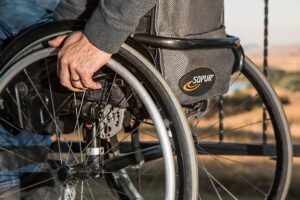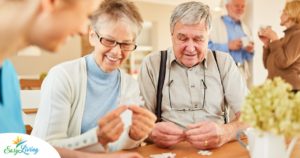The Challenges of Home Care and Caregiving
As our population rapidly ages, the number of available family caregivers in younger generations is also diminishing, making this a national crisis. The Covid-19 pandemic only heightened this problem and prompted a national conversation about caregiving and home care.
The Scope of the Issue
- The number of people in need of care in the U.S. was expected to reach 117 million in 2020 with over 53 million unpaid caregivers, according to research by AARP and the National Alliance for Caregiving. The value of the unpaid caregiving market in the US exceeds $470 billion.
- The prevalence of caregiving has risen from 16.6 percent in 2015 to 19.2 percent in 2020 — an increase of over 8 million adults providing care to a family member or friend.
- We do not have a formal system of caregiver and home care support in the U.S. Our healthcare focus is on acute care and resources operate in silos. Therefore, caregivers may spend many hours just trying to find the right resources. And, while home care has been proven to save money (and be what people want!), many gaps exist.
21st Century Home Care: Real Solutions to These Challenges
This recent article pointed out the challenges for caregivers and the innovative responses bringing home care into the 21st century. Unfortunately, much of the system is still behind the times, as the author’s quote below illustrates.
“Although I earned a doctorate in public health, I could not navigate the health care and elder care system successfully for my mother. She was hospitalized five times in the last year of her life; three times in the last two months of her life. No company, organization, service, or product that could have aided her ever marketed to me.”
As she goes on to share, thankfully innovators like EasyLiving are changing the situation. By integrating digital solutions, tech products and evidence-based home care programs, we can address the varied and many needs and pain points a caregiver and their care recipient encounter. 21st century home care reduces risk, improves quality of life, and eases the family burden and caregiver stress.
Addressing Social Determinants of Health (SDOH) with Home Care
SDOH are the “missing links” of healthcare for older adults and those with chronic conditions. They are the external circumstances that affect health risks and outcomes.
For example, an elder living in a home that is not accessible and limits their mobility is at risk for falls, isolation, and more. Their medical treatment can be top notch and the results will still be poor if their environment isn’t addressed. Another example is someone’s ability to get and prepare healthy food. If they have difficulty accessing it or paying for it, their health will likely suffer. The same goes, of course, for medications. There are a slew of little things in a person’s home life that could be a detriment to the best healthcare plan.
Too often, our system has failed to address what we call the “last mile”, borrowing from logistics. “Last mile is a term used in supply chain management and transportation planning to describe the last leg of a journey comprising the movement of people and goods from a transportation hub to a final destination. Last mile was adopted from the telecommunications industry which faced difficulty connecting individual homes to the main telecommunications network.” The best logistics systems can’t succeed without addressing this last mile problem, which can often be the most challenging. Similarly, in providing health care to elders, these issues closest to home are often the point of failure (and unaddressed).
Our 21st century home care solutions must work on addressing these factors. And, we can now do so more easily with technology, just as companies like Amazon are doing with delivery logistics.
How does EasyLiving home care address SDOH?
Our solutions are all about addressing the SDOH, or last mile problems, via technology-supported home care. First, we provide anyone with a free SDOH screening to know your risks and what needs to be addressed.
{{cta(‘bf0b4c5e-8f60-4943-bca8-5fec705572a0′,’justifycenter’)}}
Next, all our care plans are designed to address the client’s personal situation. We are the point of integration between healthcare and “real life”. We build a care plan to address issues like nutrition, medication management, home safety, transportation/access and more.
Importantly, a vital element to all this is coordination and spotting issues. Reacting to crises is a 20th century way of providing home care and healthcare. It is the reason behind the average 20%+ readmission rate for older adults when discharged from the hospital. While the hospital may have provided the best care, this is the natural result without consistent condition management at home. And, that takes a team.
EasyLiving uses evidence-based disease management programs in the home. These set up specific parameters for the care team to monitor signs and symptoms, provide patient/family education and support, and carry out the home care services that bolster ongoing health. Every customized program includes targeted services and coordination supported by care technology. EasyLiving’s tech-supported home care includes a family room portal, shared calendar, remote monitoring, virtual visits, and condition management/assessments.
Learn more about EasyLiving’s home care programs:
Congestive Heart Failure Management
Home Care Results
The proof is in the results. According to studies published in the American Journal of Accountable Care ER costs over 90 days for home care patients was $13,012 vs. $20,325 for patients who did not receive home care services. In addition, home care patients are hospitalized at a rate of 23.7% compared to a 33% coming from those not receiving services.
This represents significant reduction in costs for the healthcare system at large. More importantly, it represents a much less stressful and healthier situation for patients and families. With the type of greater coordination and technology support that home care providers like EasyLiving offer, the results are even greater.
When EasyLiving delivers home care, our focus is always on the results. We constantly measure how we’re doing, both empirically and via client, family, and care team feedback. We’ll continue developing and improving our home care programs to get results for elders and caregivers. This is the only way to move forward with home care in the 21st century and beyond. Unfortunately, some elements of the care system are still stuck in the 20th century, but families deserve more.






